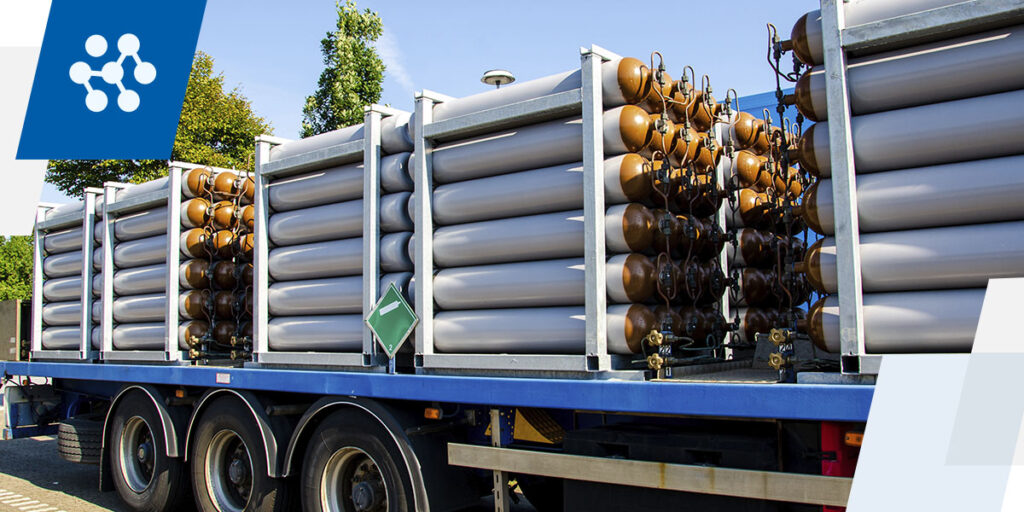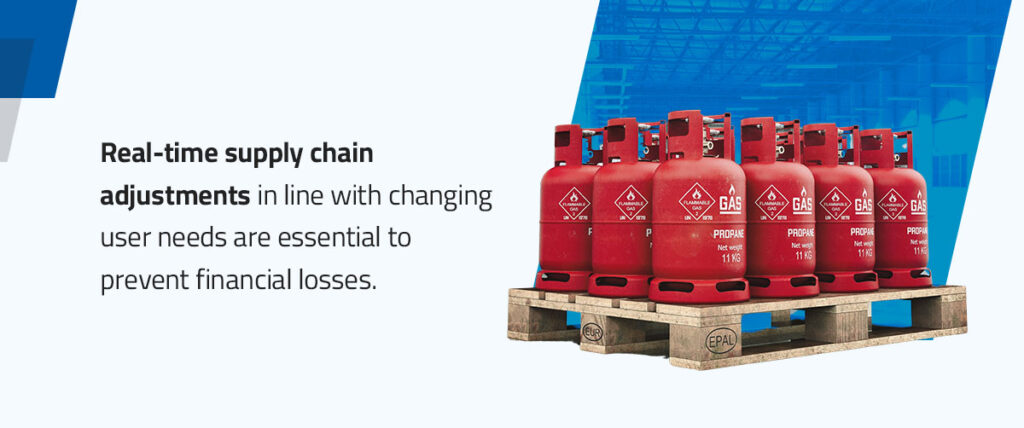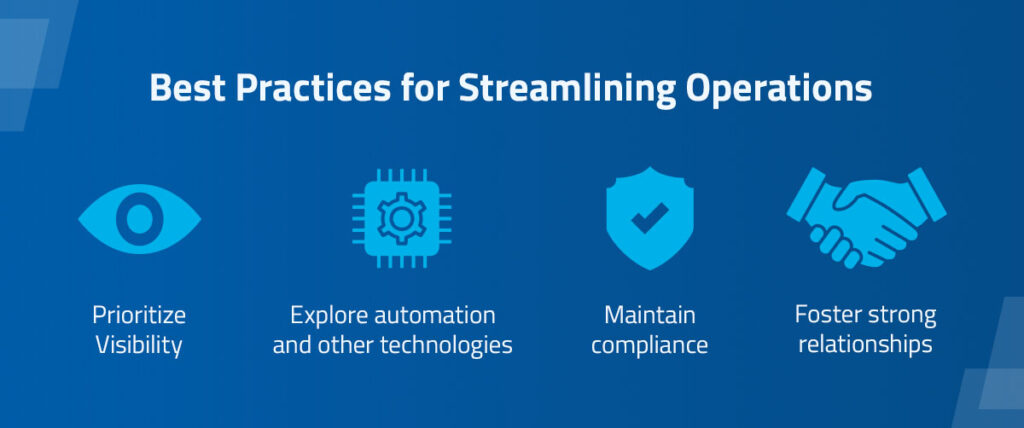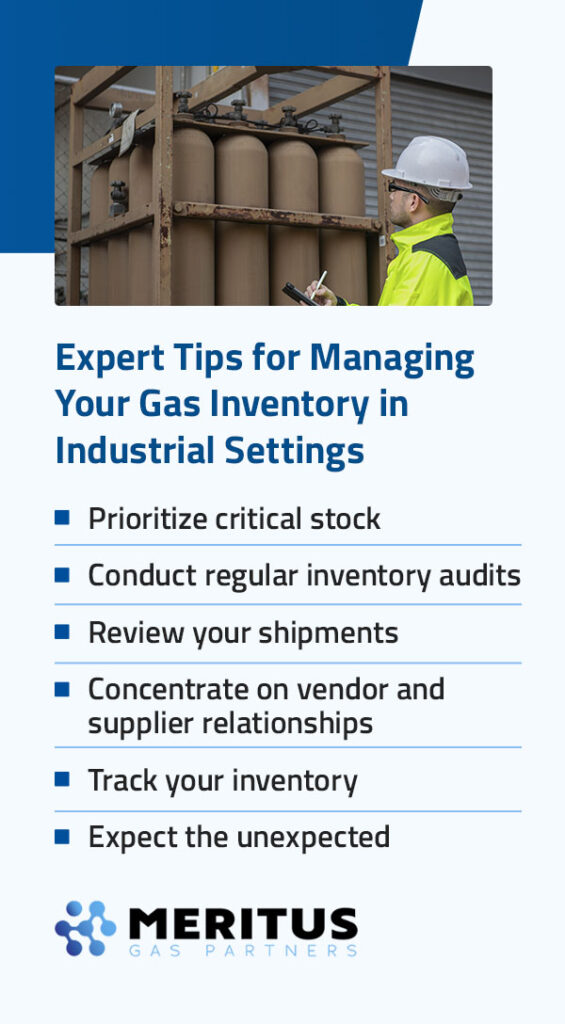

Natural gas consumption in the U.S. has been at all-time highs in recent years, reaching 32.26 trillion cubic feet in 2022. Despite this growth, the natural gas supply chain has encountered several challenges, from multiplying lead times to increasing vendor costs. Commercial gas businesses must boost efficiency even when new obstacles appear daily.
Building a resilient, efficient, cost-effective supply chain is essential to combat industry complexities and meet consumer demands. As the demand for natural gas evolves across industries, prioritizing your supply chain management eliminates unnecessary costs and streamlines your operations.
The oil and gas industry is massive, operating through a global supply chain that includes transportation, ordering, trading and control elements. This supply chain represents three components:
Meeting global gas requirements while maintaining industry control is a complex undertaking. Effective supply chain management turns the chaos into order, streamlining the movement of raw materials, minimizing delays and ensuring optimal resource utilization. Gas prices are affected by supply and demand, meaning the supply chain has a direct impact on gas value.
With the many steps in the transportation, processing and logistics, supply chain management is key to controlling costs and meeting demands. With strategic supply chain management, the flow of resources can continue. Gas supply chain management minimizes risks by up to 15% and increases cash flow from procurement to payment.
Ensuring a consistent and reliable energy supply involves five essential steps:
The oil and gas supply chain faces many challenges across all stages, and there’s more opportunity for disruption in the modern supply chain due to the dramatic global connectivity increase between people and markets. Locating and extracting raw reserves is increasingly complex, and changing market demands require adaptable refining and processing operations. Some significant challenges in the current supply chain include:

Although gas is one of the more stable worldwide industries, global lifestyle changes affect the demand for natural gases. Real-time supply chain adjustments in line with changing user needs are essential to prevent financial losses.
Maintaining visibility can be a significant challenge with multiple elements in the gas supply chain. Organizations can overcome this challenge by emphasizing transparency between vendors and suppliers, international resources, and prices. Breaking the supply chain process down makes it easier to identify and address visibility challenges and streamline the flow of operations.
Supply chains generate massive amounts of data, which requires expert teams and robust computing. The information collected along the supply chain is crucial to creating sustainable procurement strategies and meeting consumer demands. Many organizations partner with data analytics experts to organize and interpret the relevant data, further streamlining the supply chain and addressing other challenges.
Supply chain optimization is essential for the gas industry, enabling you to maximize value during gas storage, processing and transportation. Any supply chain inefficiencies leave more room for error, opening your organization to increased risk of financial loss or reputational damage. With so many moving parts to consider, a robust strategy is crucial.
Regardless of the complexity of your supply chain, boosting efficiency is always a primary objective. The following strategies can help you ensure you always deliver on time:

Adapting to the market is essential for effective supply chain management. As you’re downstream supplying end users, you must stay vigilant with your suppliers and manage consumer demand. Stay ready to adapt your strategy to accommodate supply chain disruptions in the upstream and midstream. While some of these elements are outside your control, you can take steps to mitigate the effects of disruptions and keep your customers happy.
Consider employing the following strategies:
Inventory management is a crucial element of the supply chain. It involves balancing meeting customer demands and losing money on storage. Two principal inventory management techniques exist, both of which have applications in supply chain management. Understanding the differences and weighing the pros and cons of each is vital to making the right decision for your business.
In essence, inventory management techniques prioritize either preparedness or lean efficiency. The two primary approaches are as follows:
As the name suggests, JIT is based on lean management principles and centers around having inventory when you need it. This technique has become the standard in manufacturing due to its cost reduction and elimination of non-value-added steps. As users consume your inventory, you replace it. The goal is to balance production volume with inventory levels, ensuring you only keep the stock necessary for near-term applications.
The JIT system helps you reduce inventory holding costs, free up cash flow for other business areas and save on insurance premiums. Only having the necessary stock in your inventory also reduces the chances of theft or damage. However, although this system has excellent potential for cost savings, it increases the risk of business disruptions. Your supply chain needs to function optimally to ensure your inventory is replaced before you run too short to meet customer needs.
A JIC strategy is based on expected sales. Businesses employing a JIC strategy purchase supplies to meet any reasonable level of demand. The COVID-19 pandemic is an excellent example of the JIC technique in action. During this period, all businesses experienced severe supply chain disruptions, leaving JIC businesses struggling to meet demands.
Although you incur high inventory holding costs, the method also gives you significant advantages, including keeping up with demand, fewer lost sales and bulk savings. The downsides include tying your capital up in your inventory and losing the flexibility to grow other business areas.
Whatever method you choose to manage your inventory, several best practices exist to help you maximize your setup. Keep the following in mind to optimize your management practices:

Transportation and logistics fall in the midstream supply chain, creating a link between the upstream and downstream. Arranging these transportation, storage and processing flows is incredibly complex and involves careful adherence to compliance standards and safety guidelines.
Speed and quality are the cornerstones of transportation and logistics. Blind spots, bottlenecks and delays can have severe consequences for everyone further down the chain, from commercial gas suppliers to end users. You can combat the effects of disruption with collaboration and lean principles. Consider the following additional tips:
Industrial gases are critical to various manufacturing processes. As these gases eliminate the need for traditional fueling, they provide quick solutions to many manufacturing issues and increase business efficiency. They don’t leave any residue behind, making them a clean energy source ideal for sensitive applications. Some of the many gases common in manufacturing include:
The above use cases represent just a few of the many ways industrial gases support manufacturing efforts. Their unique characteristics make them invaluable in many processes, and ensuring the gas supply aligns with production demands is crucial in any manufacturing context.

Effective supply chain management is the key to minimizing costs and boosting customer satisfaction. As a commercial gas business, you need a partner you can trust to help you navigate the complex and ever-changing industry requirements.
When you work with Meritus Gas Partners, you gain a partnership and forge long-term relationships with established entities capable of providing the support you need to optimize your processes. Our network of independently operated distributors has the necessary resources to provide local, reliable service nationwide. Reach out to us today to have a team member contact you to answer any supply chain questions.